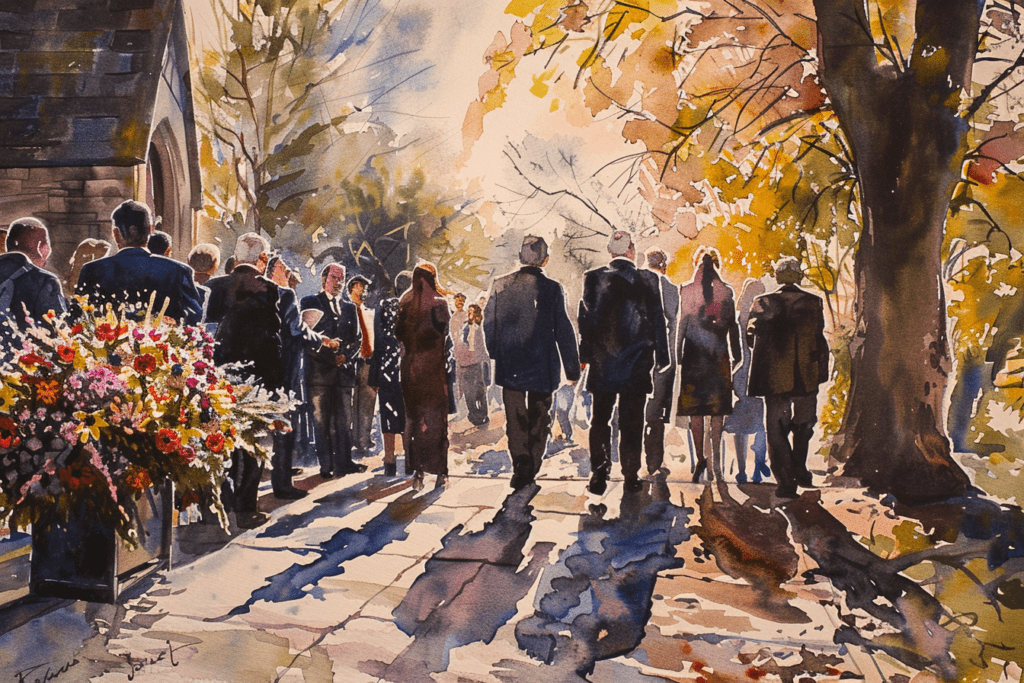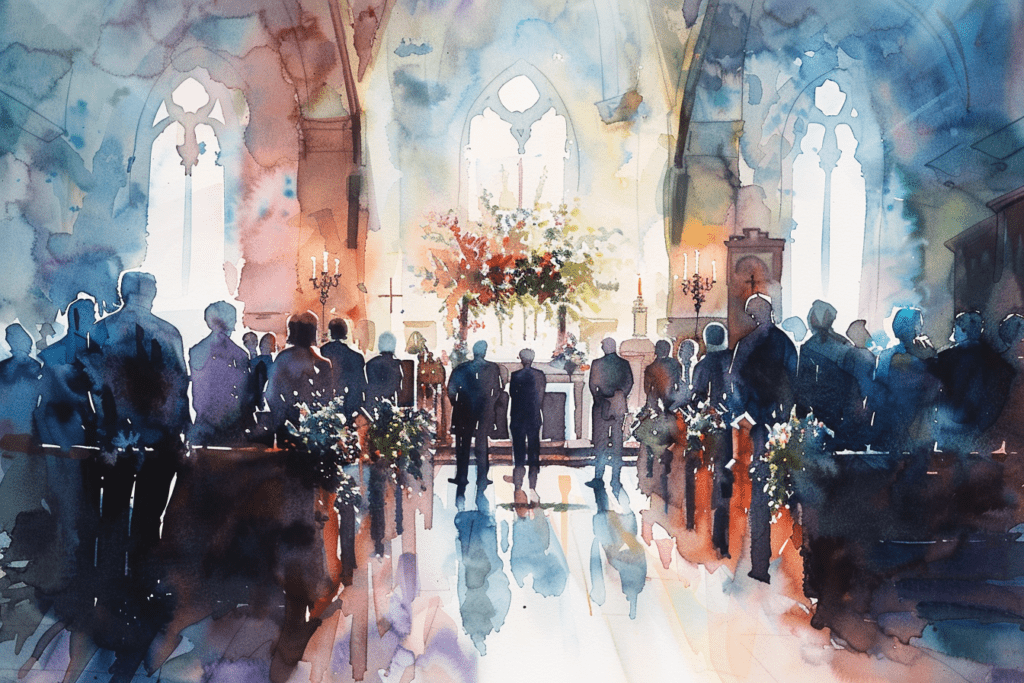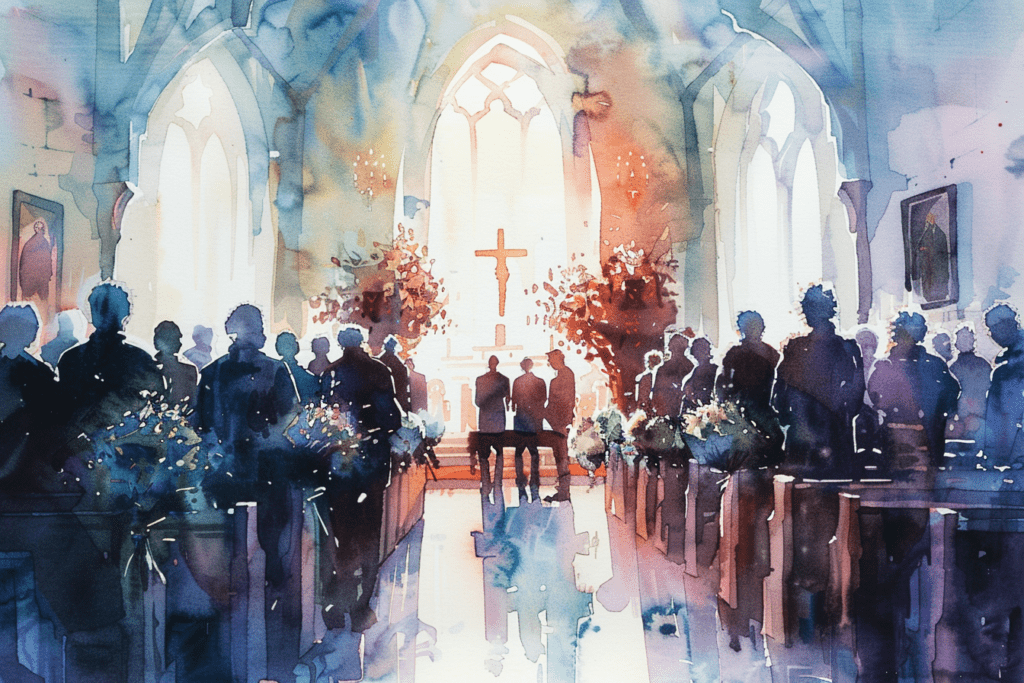
Order Of Service Booklets for Different Funeral Styles

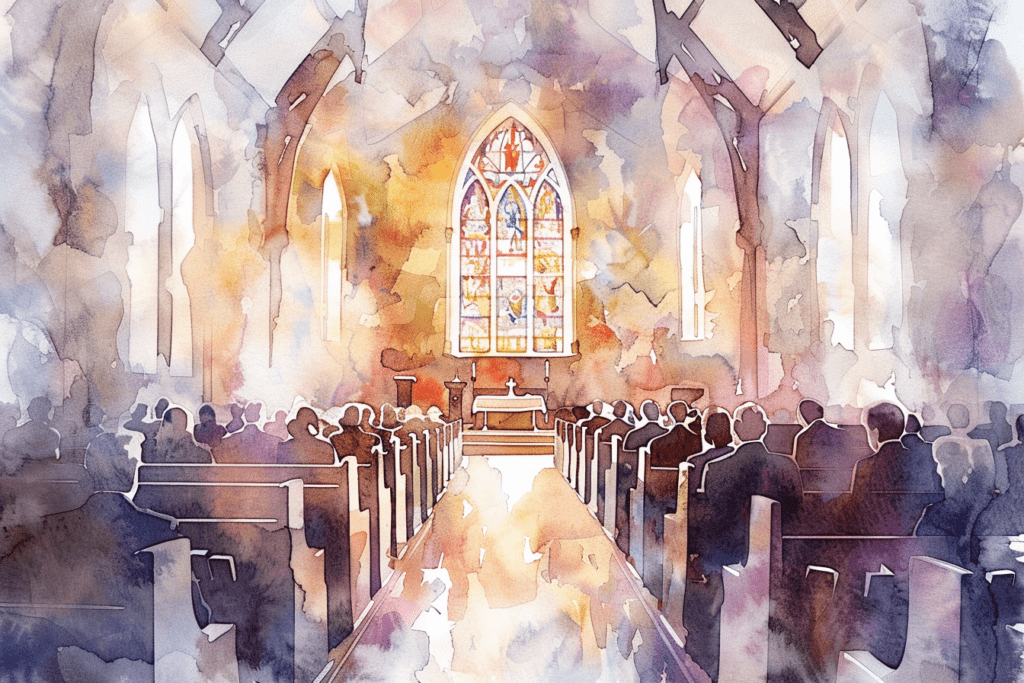

Introduction

The loss of a loved one is a deeply personal and emotional experience. When planning a funeral or memorial service, creating a share a memory card can be a meaningful way to capture and preserve cherished memories.
These cards allow family and friends to share personal anecdotes, reflections, and messages of condolence, creating a lasting tribute to the departed.
This article explores ideas and inspiration for designing a heartfelt and respectful memory card.
For inspiration please see our collection of personalised order of service booklets.
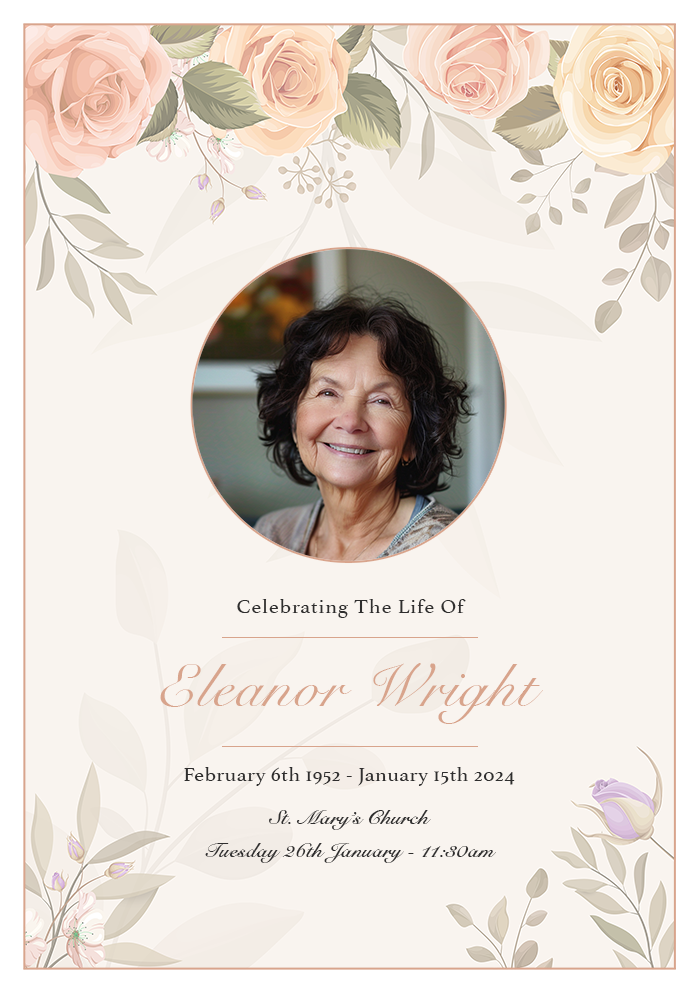
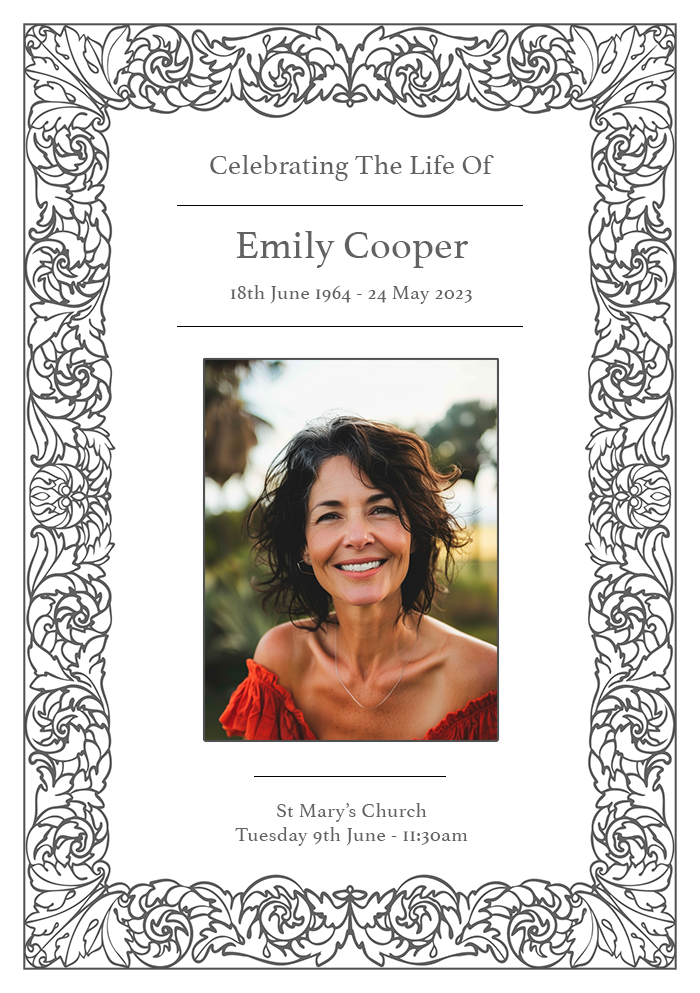
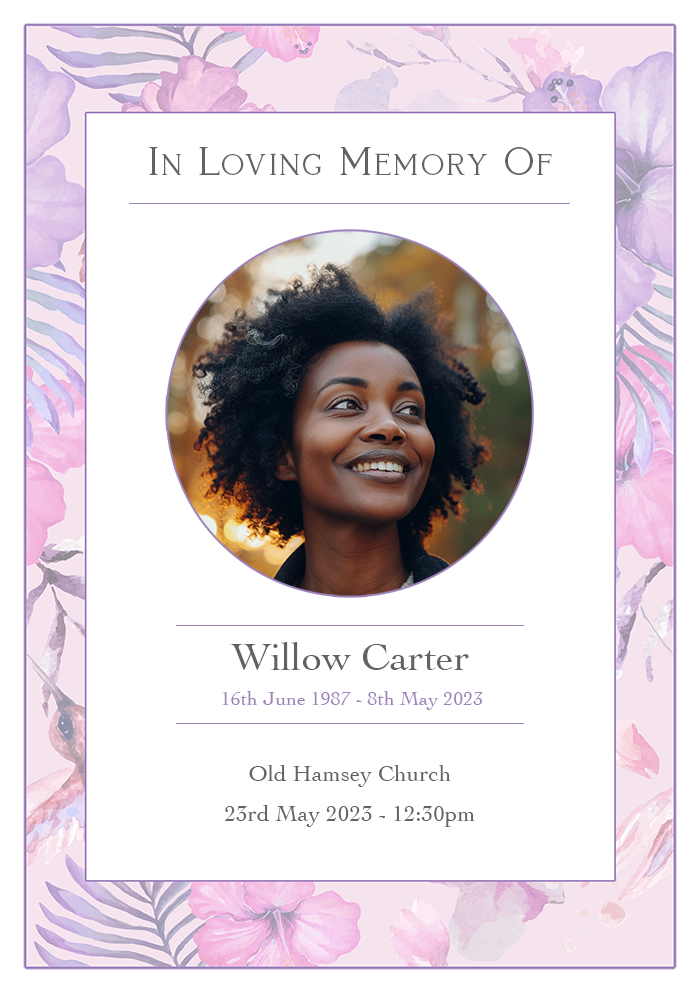
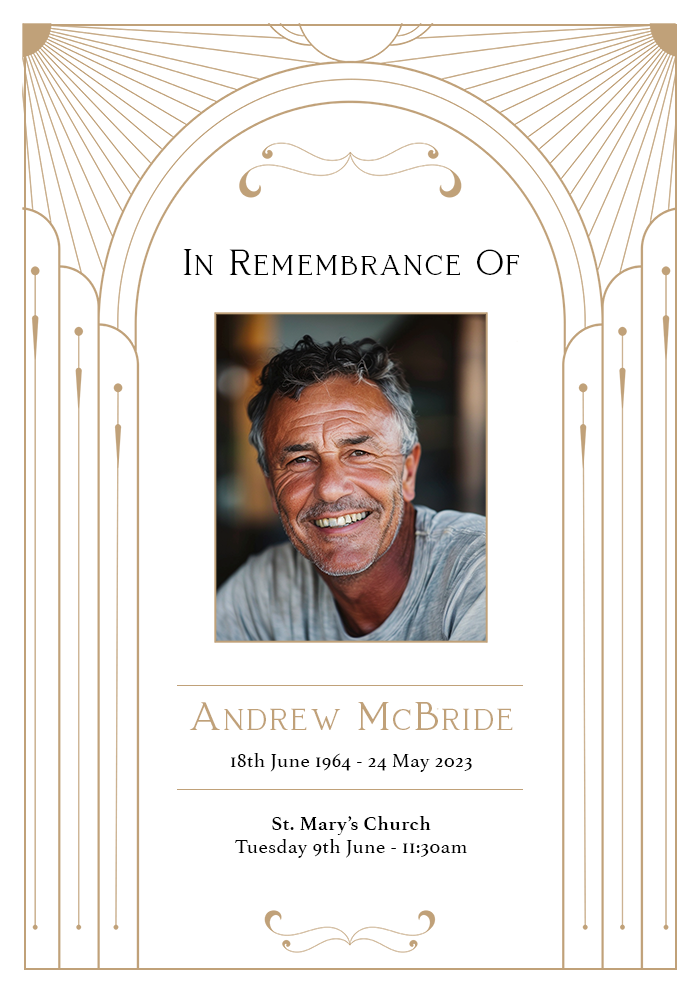
Article Contents
- Traditional Funerals
- Contemporary Celebrations of Life
- Religious Funerals
- Military Funerals
- Eco-Friendly Funerals
- Virtual Memorials
- DIY Memorial Booklets
- Conclusion

Traditional Funerals

Structure and Content
For traditional funerals, memorial booklets typically follow a formal structure. They often begin with a cover page featuring a photo of the deceased, their name, birth and death dates, and a meaningful quote or prayer.
Inside, include a detailed obituary, an order of service, hymns, prayers, and eulogies. You may also add a biography section, highlighting key moments and achievements in the deceased’s life.
Design Elements
Opt for classic, elegant designs with muted colours and simple fonts. Use high-quality paper to convey respect and dignity.
Black and white or sepia-toned photographs add a timeless touch, and a well-chosen border can frame the booklet beautifully.

Contemporary Celebrations of Life

Structure and Content
Celebrations of life are often more informal and focus on joyful remembrance. Start with a vibrant cover featuring the deceased’s photo, name, and dates.
Include a section where loved ones can share stories and memories, perhaps grouped by different periods of the deceased’s life. An order of events, favourite songs or readings, and personal anecdotes are also fitting.
Design Elements
Bright colours, modern fonts, and creative layouts are suitable for a celebration of life. Incorporate a mix of photographs, both professional and candid, to capture the essence of the person.
Adding space for guests to write their own messages and memories can make the booklet more interactive and personal.

Religious Funerals

Structure and Content
For religious funerals, the content should reflect the beliefs and traditions of the deceased’s faith.
Begin with a cover that includes a religious symbol, the deceased’s name, and dates. Inside, follow the order of the service with appropriate prayers, hymns, and scripture readings.
A section for the eulogy and personal tributes from family and friends is also important.
Design Elements
Choose design elements that align with the religious context. For example, use specific colours or symbols associated with the faith.
The layout should be respectful and solemn, with careful attention to the inclusion of all necessary religious texts and references.

Military Funerals

Structure and Content
Military funerals have their own unique structure. The booklet should start with the deceased’s name, rank, and dates, alongside a photograph in uniform.
Include an obituary that highlights their military service, honours, and awards. The order of service should detail the ceremonial aspects, such as the playing of Taps, flag presentation, and any military honours.
Design Elements
Incorporate elements of the deceased’s military branch, such as insignias or branch colours. A clean, dignified design with a focus on the individual’s service and sacrifice is appropriate.
Consider adding quotes or passages that reflect their commitment and bravery.

Eco-Friendly Funerals

Structure and Content
For eco-friendly funerals, the focus is on sustainability. The booklet can start with a nature-inspired cover design, featuring the deceased’s name, dates, and a meaningful environmental quote.
Content should include the order of service, personal stories, and any green initiatives taken in honour of the deceased.
Design Elements
Use recycled paper and eco-friendly inks. Natural colours and themes, such as leaves, flowers, or landscapes, can enhance the booklet.
Simplicity in design, with an emphasis on the person’s love for nature and sustainable living, is key.

Virtual Memorials

Structure and Content
Virtual memorials require digital booklets that can be shared online. Start with a cover page featuring the deceased’s photo, name, and dates.
Include interactive elements like video links to eulogies, photo galleries, and messages from loved ones. An order of virtual events and links to online resources or charities for donations can also be included.
Design Elements
Digital design allows for more creativity with multimedia. Use vibrant, high-resolution images and engaging formats.
Ensure the booklet is easily accessible on various devices and platforms, and consider creating a downloadable PDF version for those who wish to keep a physical copy.

DIY Memorial Booklets

Structure and Content
For those who prefer a personal touch, DIY memorial booklets offer complete creative freedom. Begin with a cover that reflects the deceased’s personality.
Inside, include a mix of structured content like the order of service and informal elements like hand-written notes, drawings, and collages.
Design Elements
Handmade booklets can use a variety of materials, such as scrapbook elements, fabric covers, or hand-stitched binding.
Personalise with mementos like pressed flowers, ticket stubs, or other significant items. The key is to create something unique that resonates with the deceased’s character and the family’s memories.

Conclusion

Creating a memorial booklet is a meaningful way to honour a loved one’s life and legacy.
Whether you choose a traditional, contemporary, religious, military, eco-friendly, virtual, or DIY style, the booklet serves as a cherished keepsake for family and friends.
By thoughtfully selecting the structure, content, and design elements, you can craft a tribute that truly reflects the individuality and spirit of the departed.



